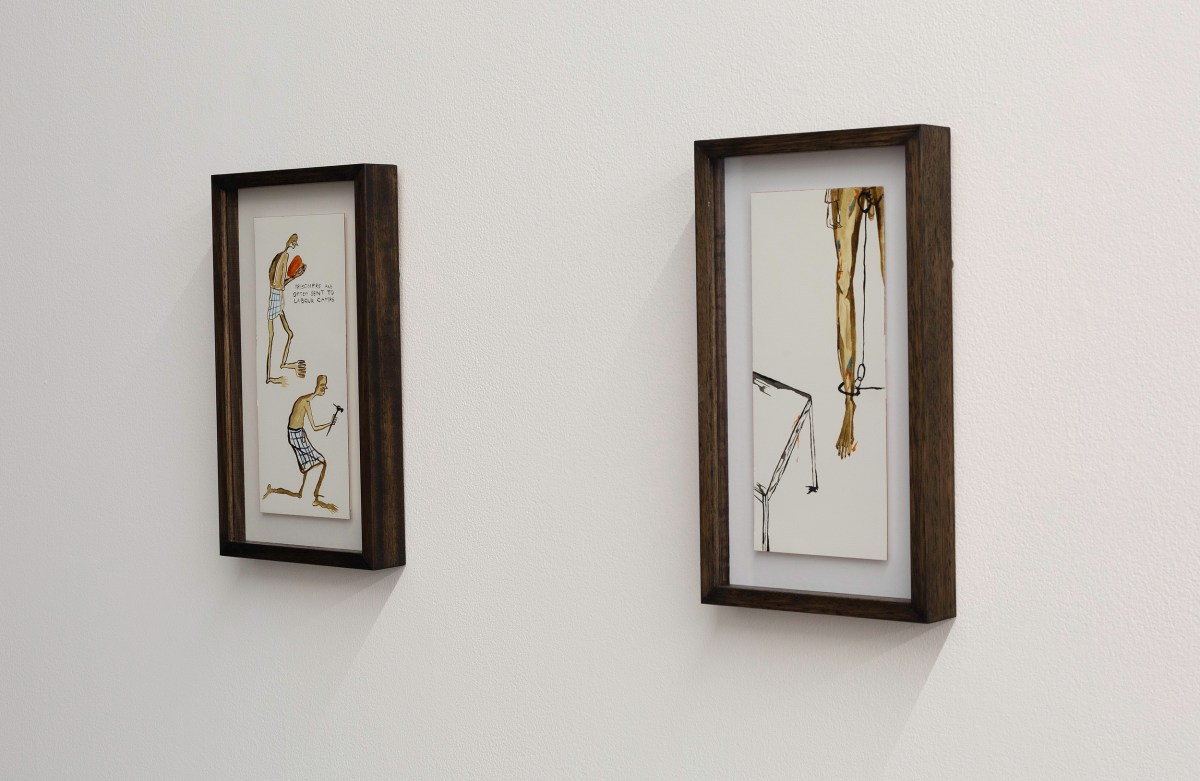‘We felt like we lost everything. Our future was gone.’
The speaker was Ma Ei, a Burmese performance artist and poet who has exhibited in Sweden and Hong Kong. The occasion was an artist talk at Gertrude Glasshouse, researched and curated by guest curator Amelia Winata at Gertrude Contemporary, and the subject was Mia Boe’s delicate ink studies of the Insein Prison in Burma. These three artists came together last Sunday (27 August) to spotlight artists working under conditions of imprisonment, whose desire for democracy cannot be contained.
Ei was describing waking up to a country that had undergone its third coup in as many generations, but retains dreams of freedom that have sustained an artistic diaspora and a secondary group of artists, curators and supporters that seek to hold space for their voices. Both Ei’s words and Boe’s works demonstrate the stark dilemmas that face Burma’s dissident artists as they fight for their lives and their livelihoods.
Going Insein is an exhibition of ink studies that takes as its subject the Insein Prison, Burma’s infamous detention centre for its more than 23,000 political prisoners. Like Vietnam’s Chí Hòa Prison, described in André Dao’s recent autofictional work Anam, this prison is built on a panopticon design, which means surveillance is constant, punishment for perceived crime brutal and privacy scarce. Yet Boe’s delicate sketches show how, in moments of privacy and introspection, prisoners are able to hold onto hope and that their dreams of freedom remain beautiful and illuminating.
The concept behind Going Insein was developed by Boe – whose large portraits have been exhibited in the National Gallery of Victoria (NGV)’s Melbourne Now series – and Winata who, before working as a curator, founded Melbourne’s arts journal Memo Review. The addition of Ei’s lived experience demonstrates an evocative attempt to hold space for a group of people with a courageous commitment to freedom.
Going Insein showcases ink studies that are as arresting as Boe’s large canvases for their ability to evoke confinement and intimacy as well as their thoughtful detail and philosophical dexterity. The exhibition opens with an initial series introducing Insein Prison. Panopticon (2003) links the prison’s design back to the philosopher Jeremy Bentham (1748 – 1832), who called the notion of natural rights ‘nonsense on stilts’ and touted the design of a prison where guards could be all-seeing and all-knowing.
The concept of the panopticon has gained new currency in our newly interconnected era, but places like the Insein Prison still attest to the mystery of hope during adversity. There is a delicate ink drawing Ngapi (fish paste) (2023) that demonstrates the sparse diet of fish paste, occasional fish heads, bones and rice, provided to prisoners who subsist on their inner strength and commitment to free expression.
Read: Exhibition review: Dean Cross, Canberra Contemporary Art Space
This is never clearer than in the exhibition’s final study, Leippya (2023, which attests to a Burmese belief that the soul can take flight like a butterfly and transcend suffering. This uplifting image creates the suggestion that, even in a centre built for interrogation like the Insein Prison, the resilience of the human spirit transcends all attempts to prevent it from taking flight.
Going Insein is showing at Gertrude Glasshouse until 2 September 2023.





